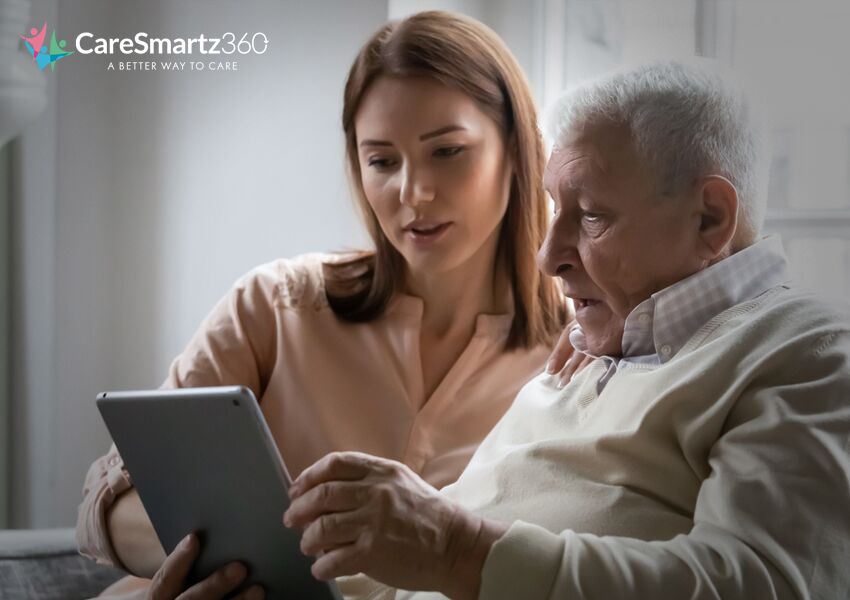
Caregiver documentation accuracy is crucial to maintain care quality and facilitate effective communication among home care professionals.
There are many ways to achieve this accuracy, which we will discuss in this blog. The first step is to record caregiver activities and observations in a timely and thus, precise manner. This ensures that updated and reliable documentation is available.
Further, attention to detail is essential to ensure accuracy and thoroughness in the documentation.
To know the rest, read on to know the caregiver best practices to ensure their documentation is clear, concise, and easily understood. All this while ensuring their motivation is intact to maintain the documentation:
This is caregiver best practices 101. Caregivers absolutely need to ensure that they document the care they deliver promptly and accurately record any changes in the senior’s condition.
After all, this data works as the go-to reference to plan for future care and make business-critical decisions.
Besides being prompt, caregivers must regularly update the documentation and also record any changes in the senior’s care plan.
It’s an easy, doable method which doesn’t take much time as compared to compiling documents at once at the last moment!
Besides, it helps maintain a comprehensive and updated record of the care delivered, ensuring that no critical data is missed.
Further, allow caregivers to use home care staffing software to benefit from tools like tables or lists to organize their documentation. They can use tables to record vital signs, medication schedules, or other structured data to easily locate and review specific details.
Meanwhile, lists can be used to document everyday activities or completed tasks, offering a clear overview of the care delivered.
Regularly updating documentation ensures that caregivers don’t find it an uphill task to compile the documents all at once and delay the task further, to the agency and client’s dismay.
When documenting care offered to the seniors, caregivers must express information in an easily comprehensible way so there’s no chance of any misinterpretation.
They should use simple and straightforward language so their documentation is accessible to all who view it, including other home care professionals and clients’ families.
The best part about concise language is that it allows caregivers to provide comprehensive information succinctly.
Here’s how caregivers can document in clear and concise language:
By following a uniform format, caregivers would eventually create a system that makes the efficient retrieval of specific information possible, significantly saving time and reducing the risk of omissions or errors.
To arrive at an organized and structured format, the first step is to use consistent headers and sections in documentation as caregivers use home care facility management software.
It offers a clear structure to organize data and helps caregivers and other home care professionals quickly locate the relevant details they require.
Caregivers can also arrange documentation in chronological order, which will create a timeline of events, allowing them to track the progress of an elderly’s care and identify any changes or patterns in their condition.
By organizing documentation in this way, caregivers can provide a comprehensive overview of the care provided and ensure that nothing is overlooked.
By sharing information as they work together, caregivers ensure that crucial data is accurately recorded, thus enhancing the overall documentation quality and eventually, care.
Offer them an ecosystem to actively engage with other caregivers and doctors, nurses, therapists, etc. involved in an elderly’s care.
As caregivers share information and insights, they gain a better understanding of the elderly’s condition and needs.
Based on this, they can deliver just the care a client needs and correspondingly, deliver better care outcomes.
So, allow them to conduct regular team meetings. Also, tell them to document their interactions with the care recipients, so that no bit of care information is left out.
These conversations may include concerns expressed by the elderly or their family, instructions given, and any changes in the elderly’s goals or preferences.
Last but not least, positive reinforcement goes a long way in motivating caregivers to compile all relevant documentation.
Agency owners can acknowledge or appreciate caregivers who consistently meet documentation deadlines in majorly two ways:
Keep timely documentation an important parameter of performance evaluation.
Something as simple as praising a caregiver during a staff meeting can significantly boost their motivation.
Further, consistently offering small incentives bring about big changes in terms of caregiver motivation.
It’s no news that effective caregiver documentation is the essence of quality care.
And by prioritizing timely and accurate recording, clear and concise language, and all other strategies mentioned above, home care professionals are empowered to provide the best possible care for the seniors.
Our users reported 95% customer satisfaction in 2024. Schedule a personal walkthrough to see CareSmartz360, home care software in action.